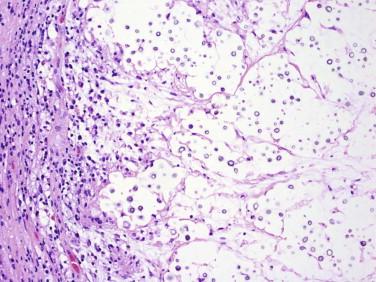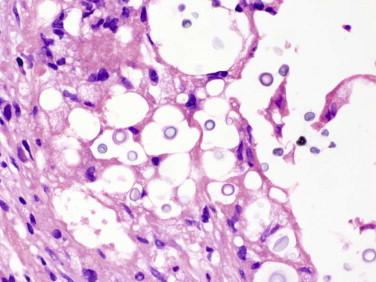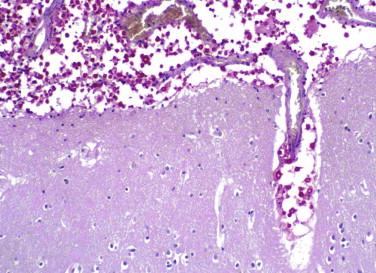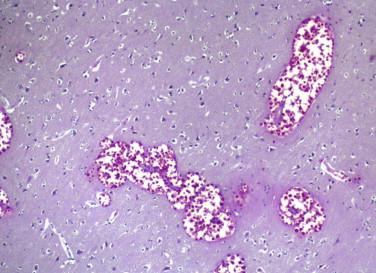Physical Address
304 North Cardinal St.
Dorchester Center, MA 02124
Severe CNS fungal infections caused by the genus Cryptococcus ; includes meningitis and focal “cryptococcomas”
C. neoformans : ubiquitous in soil, bird excrement, compost
C. gattii : tropical/subtropical climates, North American western coast
Eucalyptus trees primarily
Primarily infects nonimmunocompromised persons
Most common CNS fungal infection in immunocompromised (primarily C. neoformans )
Increased incidence: alcoholism, sarcoidosis, corticosteroids, immunosuppression/autoimmune
First manifestation of AIDS in up to 70% of HIV-positive adults, rare in children
Two to seven per 1000 HIV-positive patients affected per year in the United States
Inhaled spores
Most people clear infection
Delayed hypersensitivity reaction (positive skin test)
Pulmonary
Infiltrates, lymphadenopathy, effusions, cavitations
Hematogenous dissemination from lungs (most common route)
CNS, skin, myocardium, eyes (almost any organ)
Meningitis (tends to be basal)/encephalitis
Cryptococcoma: commonly seen in immunocompetent (usually C. gattii )
Subtle onset: relapsing/remitting with vague symptoms
Headache, fever, generalized discomfort, nausea and vomitting, meningismus, mental status changes, visual complaints
Seizures, focal neurologic deficits less commonly
Cerebrospinal fluid
CSF polymerase chain reaction (PCR) for diagnosis
Protein: normal to 500 mg/dL
Glucose: normal/mildly decreased
Pleocytosis (predominantly mononuclear)
Neurotropic: CSF is an excellent growth medium
Mortality rate: 6% to 14% (with treatment)
High relapse rates
Amphotericin B and flucytosine
Opaque/fibrotic meninges (especially base of brain/cerebellum) in nonimmunocompromised patients
Gelatinous-appearing cysts in the basal ganglia
Isolated cryptococcal abscess (cryptococcoma)
Encapsulated ovoid budding yeast (3 to 20 µm)
Capsule: clear halo on H&E
Sometimes confused with corpora amylacea
Meningitis with granulomatous inflammation (nonimmunocompromised)
Spherical organisms with capsule found in subarachnoid space
Can lead to hydrocephalus/cerebral edema
Immunocompromised patients: minimal inflammation/necrosis until late stage of the disease
Intraparenchymal lesions
Cystic “soap bubbles”/solid nodules
Basal ganglia most common location
Perivascular “tubercles”: 3 mm or smaller
Cryptococcomas (“Torulomas”)
Immunocompetent hosts usually
Mass lesions, sometimes granulomatous
May involve meninges, ependyma, choroid plexus, parenchyma
Mucicarmine, Gomori methenamine silver (GMS), Alcian blue
Other mass lesions
Toxoplasmosis, lymphoma, neoplasm
Intracranial hemorrhage
Sarcoidosis
Meningitis/encephalitis/abscess (e.g., bacterial/mycobacterial/parasitic/candida)
Other HIV encephalitides





Inhaled spores/conidia of Aspergillus species (ubiquitous mold) cause an array of disease manifestations ranging from allergic reactions to disseminated aspergillosis; angioinvasive
Become a Clinical Tree membership for Full access and enjoy Unlimited articles
If you are a member. Log in here